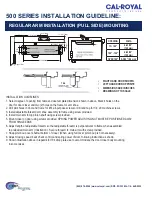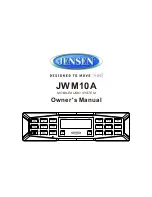
H8153 DC Stick/TIG Pulse Welder
-15-
Symptom
Possible Cause
Possible Solution
Failure of weld to
fuse completely with
base metal or prior
weld bead.
1. Insufficient heat applied to weld.
2. Improper welding technique.
3. Workpiece dirty.
4. Duty cycle exceeded.
1. Increase amperage; select larger electrode.
2. Widen groove to access bottom during welding;
keep arc on leading edge of weld puddle; place
stringer bead in proper location at joint during weld-
ing.
3. Remove all grease, oil, moisture, coatings, rust, and
dirt from workpiece before welding.
4. Shut down welder and allow it to cool.
Unstable arc.
1. Weld circuit polarity is incorrect.
2. Tungsten rod is contaminated (TIG).
3. Arc too long.
4. Workpiece is dirty or damp.
5. Incorrect gas or gas settings (TIG).
1. Switch cable polarity at welder.
2. Remove
1
⁄
2
" of contaminated tungsten rod and prop-
erly repoint rod.
3. Shorten arc; lower torch/electrode closer to
workpiece.
4. Remove all grease, oil, moisture, coatings, rust, and
dirt from workpiece before welding.
5. Use the correct gas for the welding operation; adjust
the gas flow as necessary.
Arc wanders.
1. Improper gas flow (TIG).
2. Arc too long.
3. Contaminated electrode/tungsten rod.
4. Workpiece is dirty or damp.
5. Incorrect gas or gas settings (TIG).
1. Adjust gas flow as necessary.
2. Shorten arc; lower torch/electrode closer to
workpiece.
3. Replace electrode; (TIG) remove
1
⁄
2
" of contami-
nated tungsten rod and properly repoint rod.
4. Remove all grease, oil, moisture, coatings, rust, and
dirt from workpiece before welding.
5. Use the correct gas for the welding operation; adjust
the gas flow as necessary.
Arc is difficult to
start.
1. Weld circuit not complete.
2. No or inadequate gas flow (TIG).
3. Incorrect electrode/tungsten rod used.
4. Workpiece is dirty or damp.
5. Incorrect gas or gas settings (TIG).
1. Check clamps and cables; tighten all connections.
2. Check all gas hoses and connections for leaks and
tighten/replace as necessary; adjust gas flow as
necessary.
3. Use correct type and size of electrode/tungsten rod.
4. Remove all grease, oil, moisture, coatings, rust, and
dirt from workpiece before welding.
5. Use the correct gas for the welding operation; adjust
the gas flow as necessary.






































